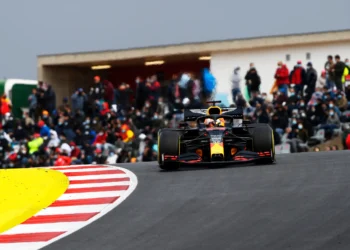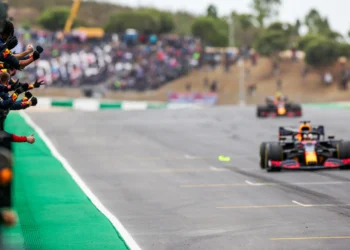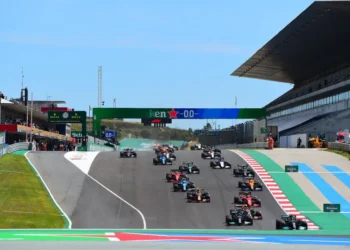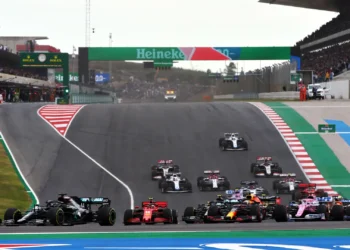In the world of NASCAR, the shift of the season-ending championship race from the Homestead-Miami Speedway to the Phoenix Raceway in 2020 ignited fury among fans. However, a fresh perspective has emerged that could alter the dynamics of this heated debate. NASCAR star William Byron, a winner of the illustrious Daytona 500 and six other races in 2023, along with Ryan Blaney, the defending Cup Series champion, are changing the narrative. They believe the repositioning of Homestead from the playoff to the regular season isn’t a downgrade, but an opportunity to make the race more thrilling and unpredictable.
Rewind to November 17, 1999, when the Homestead-Miami Speedway buzzed with excitement as Tony Stewart clinched his first NASCAR Cup Series win at the Pennzoil 400, an event that etched the track’s name in history. From then on, this sun-drenched arena stood as the ultimate battleground, hosting several iconic races, such as Jeff Gordon’s high-stakes 2011 showdown and Kyle Busch’s inspiring 2015 comeback. The decision to move the finale to Phoenix was met with widespread disappointment and nostalgia for the Homestead championship’s bygone era.
Amid this controversy, Byron and Blaney offer a different perspective. They argue that Homestead’s transition into the regular season could reinvigorate the NASCAR experience at this iconic venue. During a recent broadcast, a female host raised a pertinent question: would this shift result in more aggressive and risky driving, considering there would be no playoffs at stake? Playoff races often compel drivers to adopt a conservative approach, with their eyes firmly set on the championship.
Byron’s response to this question was assertive and insightful. He welcomed the race’s move to spring, stating this change could encourage drivers to take more risks. The absence of playoff or championship pressure could spur drivers to be less cautious and more audacious, potentially turning Homestead into a racing playground.
Blaney, a former Xfinity Series winner at Homestead, echoed Byron’s sentiments. The duo’s agreement, rare among NASCAR’s top echelon, suggests that without a title at risk, drivers might dare to explore daring lines and push the boundaries, without jeopardizing their season’s efforts. Byron framed this change as a chance to “enjoy Miami” more by replacing stress with fun. This new approach could transform Homestead’s race, scheduled for March 23, 2025, into a stage for daring and intrepid racing.
Byron’s take offers a fresh perspective on the fan outrage. Instead of seeing the shift as a snub, he views it as an opportunity for high-risk, high-reward action, poised to deliver the adrenaline rush NASCAR fans crave.
The debate between Phoenix and Homestead, however, continues. Some fans were incensed by Phoenix’s ascension to the championship track, with one fan on Reddit lamenting it as a “fu**ing shame.” Phoenix’s one-mile circuit, known for its tight desert duels, contrasts with Homestead’s expansive layout. However, Byron sidesteps the “Phoenix hate,” asserting that the reshuffling allows each track to capitalize on its unique features.
Interestingly, Phoenix was the site of ostrich races in the 1980s, a far cry from the high-stakes racing it now hosts. Blaney’s 2023 title win at Phoenix demonstrates its demand for precision. Homestead, which was rebuilt after Hurricane Andrew devastated South Florida in 1992, can now showcase its potential for raw speed, a trait Byron enthusiastically supports. Furthermore, Homestead’s banking was modified in 2003 to a progressive 18-20 degrees, making it a challenge for drivers eager to push the limits.
In contrast, Phoenix, with its flatter turns, excels in restarts and strategy. This arrangement offers fans a diverse experience: one race is a strategic nail-biter, while the other is a full-throttle spectacle. Whether this new arrangement will satisfy the die-hard Miami fans is the wildcard for the 2025 season.










